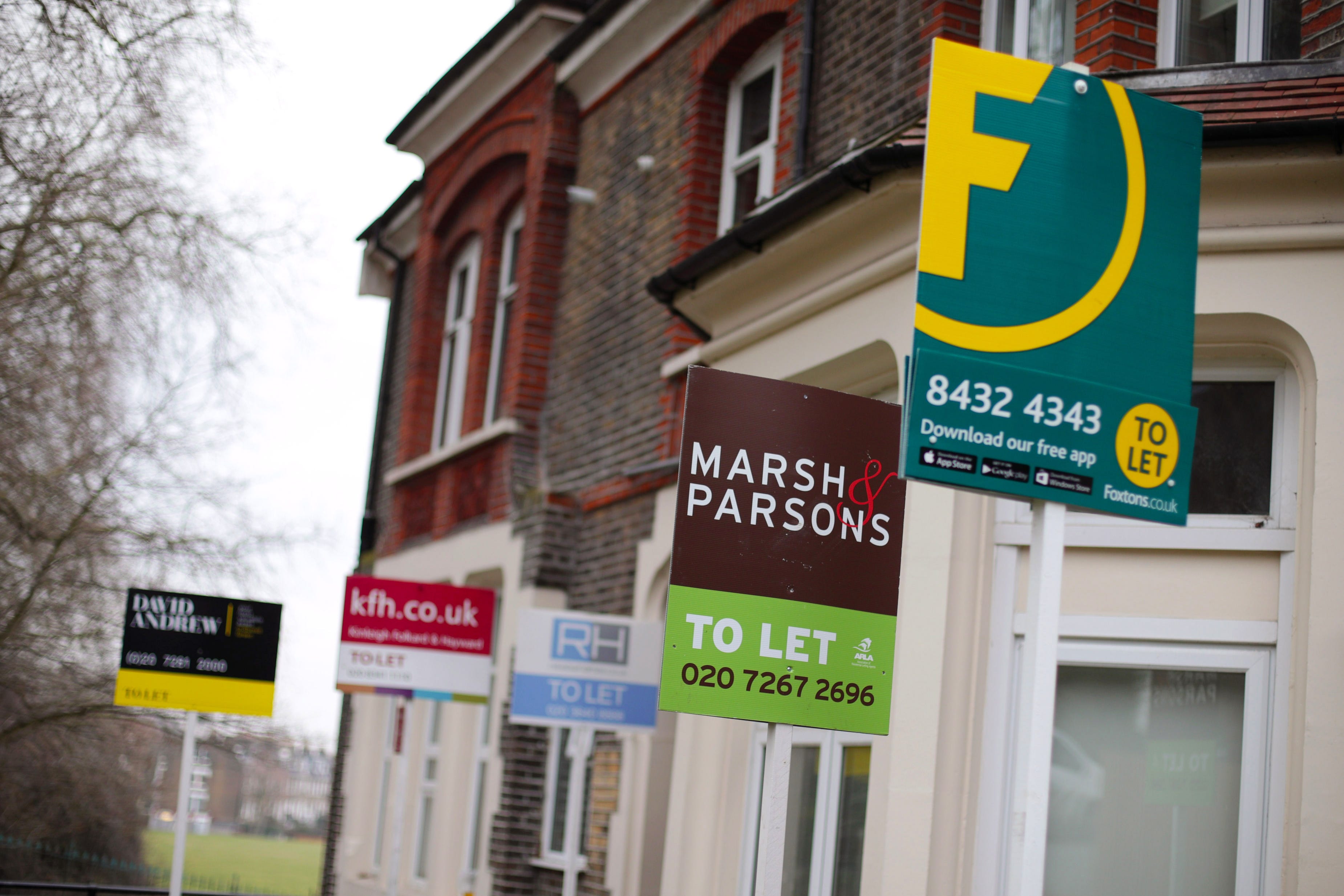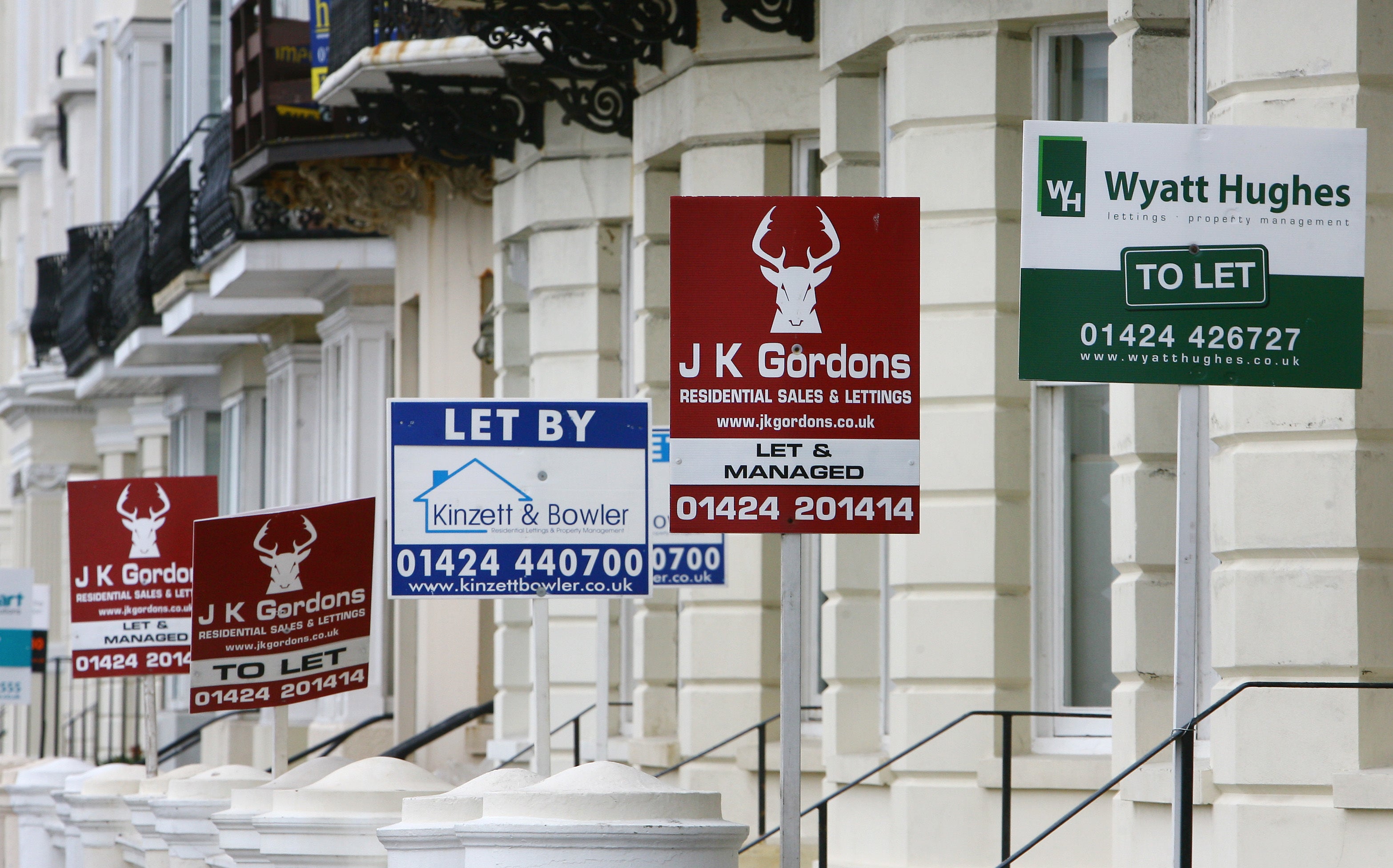Rent costs finally fall outside London but capital hits another record high
It is the first time average asking rents have fallen since pre-Covid

Your support helps us to tell the story
From reproductive rights to climate change to Big Tech, The Independent is on the ground when the story is developing. Whether it's investigating the financials of Elon Musk's pro-Trump PAC or producing our latest documentary, 'The A Word', which shines a light on the American women fighting for reproductive rights, we know how important it is to parse out the facts from the messaging.
At such a critical moment in US history, we need reporters on the ground. Your donation allows us to keep sending journalists to speak to both sides of the story.
The Independent is trusted by Americans across the entire political spectrum. And unlike many other quality news outlets, we choose not to lock Americans out of our reporting and analysis with paywalls. We believe quality journalism should be available to everyone, paid for by those who can afford it.
Your support makes all the difference.Average asking rents outside London have fallen for the first time since before the pandemic, marking a potential shift in the rental market.
Rightmove reports a 0.2 per cent quarterly decrease, bringing the average advertised rent down to £1,341 per month.
While this represents a modest £3 drop, it halts a long streak of record-high prices.
Though rents remain 4.7 per cent higher than a year ago, this is the slowest growth rate since 2021.
Meanwhile, London's rental market continues its upward trajectory, with average advertised rents reaching another record high of £2,695 per month, the 13th consecutive quarterly increase.
But Rightmove said the quarterly increase in monthly asking rents in London was relatively small, at 0.1 per cent or £1.
Average rents in London were 2.4 per cent higher than a year ago – the lowest increase since 2021.
A rising supply of rental homes to choose from was improving the balance of supply and demand, the website said, although there were still 10 applications being made typically per rental property.
Rightmove said that looking across Britain, rental supply had increased the most in the north-east of England, and least in Wales.

Some rental sector demand may have moved across to the house sales market, Rightmove suggested, helped by some mortgage rate reductions and rising wages.
It said agents were also reporting that some tenants were choosing to stay put rather than move due to the costs.
Rightmove’s property expert Colleen Babcock said: “A first quarterly drop in rents is the culmination of several months of improvement in the balance between supply and demand.
“While new tenants are still paying more than they were at this time last year, the pace of growth continues to slow. However, though this is the big picture of market activity, agents on the ground still tell us that the market is very hot, and some areas have improved more than others when it comes to the supply and demand balance.
“Our own data shows that the average rental property is still receiving 10 applications per property, which is lower than the peak, but still double the pre-pandemic norm.”
John Baybut, managing director at Berkeley Shaw Real Estate in Liverpool, said: “Demand is generally still pretty strong and the market is still busier than before the pandemic. Tenants are paying very high rents, so with more supply on the market now, some are being more ‘choosy’.
“Some have also decided the costs of moving are too expensive and have decided to stay put. Landlords have to be careful to price accurately right now, despite having their own affordability pressures with high mortgage rates. Landlords need to work closely with experts to set the right price and keep their home occupied in the current market, reducing the risk of void periods.”
Alex Bloxham, a partner and head of residential lettings at Bidwells, said: “These figures suggest landlords are continuing to invest in their buy-to-let portfolios, while more tenants are choosing to stay put, likely due to continued macroeconomic uncertainty and the up-front costs involved in relocating.”
Join our commenting forum
Join thought-provoking conversations, follow other Independent readers and see their replies
Comments